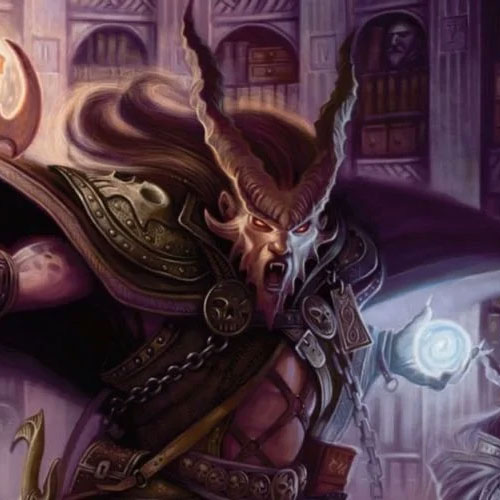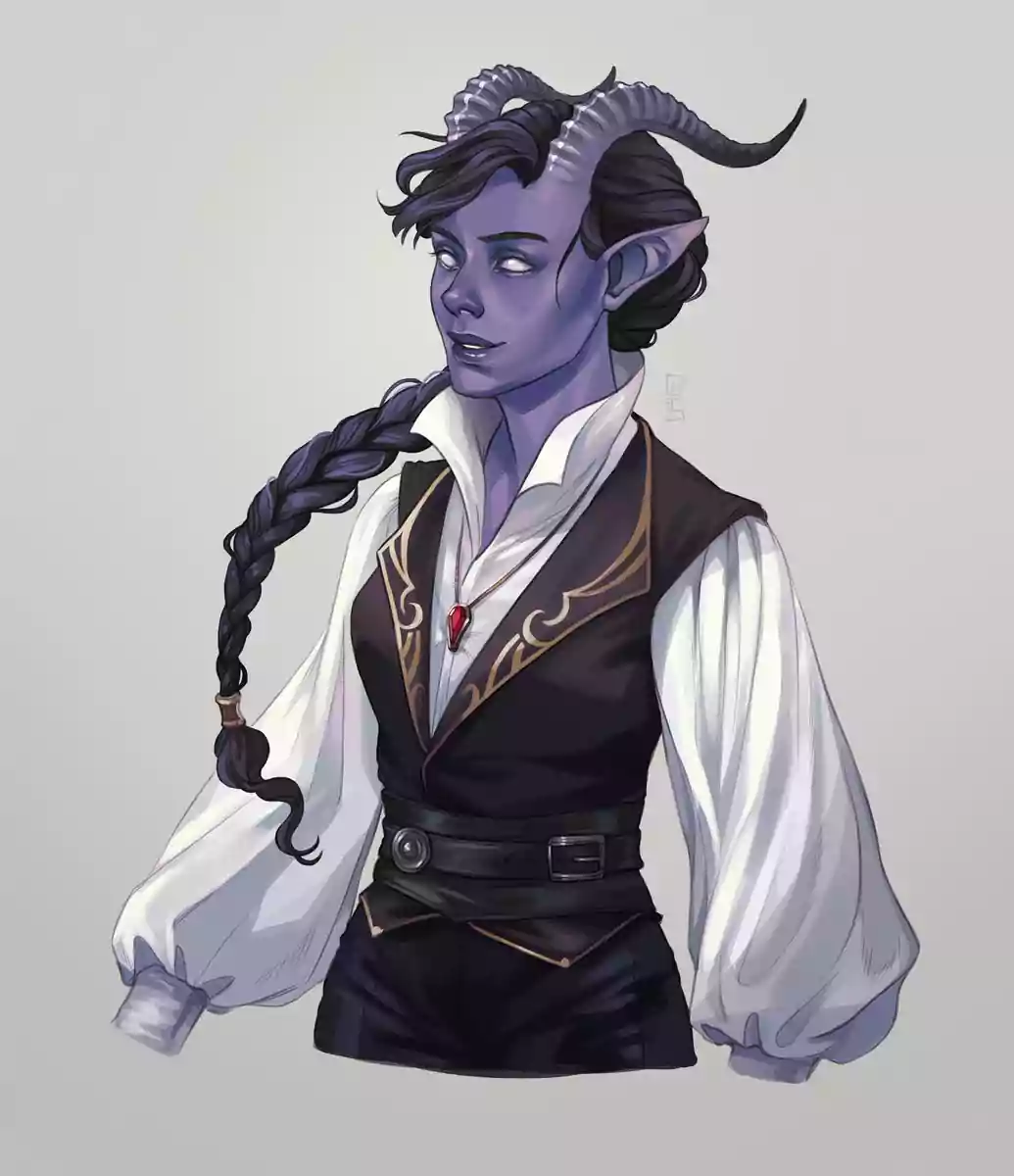So here we are, diving headfirst into the world of Dungeons & Dragons, a realm where creativity knows no bounds and imagination is king. Let's talk about something that gets every player hyped—character creation. And when it comes to tieflings, one of the most intriguing races in the game, choosing the right name can make or break your character's vibe. Tiefling names DnD, people! It’s not just about slapping a label on your character; it’s about crafting an identity that resonates with their dark heritage and unique personality. So buckle up, because we’re about to deep dive into the art of naming your fiendish friend.
Let’s face it—tieflings are cool. They’re the descendants of humans and fiends, carrying a touch of the infernal in their blood. Their names often reflect their otherworldly origins, blending elements from ancient languages, demonic influences, and cultural ties. Whether you're playing a rogue with a penchant for mischief or a warlock channeling eldritch power, having a name that fits is crucial. And hey, who doesn’t love a good backstory? Tiefling names DnD can set the tone for your entire campaign.
But wait—there’s more! Naming your tiefling isn’t just about sounding cool. It’s about understanding the lore behind these fascinating creatures. From their societal structure to their personal struggles, tieflings have a rich history that shapes their identities. So whether you’re looking for inspiration or just want to geek out over some badass names, this guide’s got you covered. Let’s get into it, shall we?
Read also:Meg Turney The Ultimate Guide To Her Career Influence And Legacy
Why Tiefling Names DnD Matter
Names carry weight, especially in the world of D&D. For tieflings, their names often reflect their dual nature—human and fiendish. These monikers can hint at their family lineage, cultural background, or even their alignment. A name like "Zariel" might suggest celestial influence, while "Baelgar" screams pure chaos. The right name can add depth to your character and make them stand out in the party. Plus, let’s be honest—it’s fun to say!
Unpacking the Lore Behind Tiefling Names
Tieflings aren’t just random individuals with horns and tails; they come from a rich tapestry of cultures and histories. In the Forgotten Realms, for example, tieflings often hail from the nation of Bael Turath, where humans made pacts with devils to gain power. This legacy is reflected in their names, which often incorporate Infernal or Abyssal elements. Think about the kind of world your tiefling comes from and how that might influence their name. Are they proud of their heritage, or do they try to distance themselves from it?
Breaking Down Tiefling Name Structures
When it comes to tiefling names DnD, structure matters. Most tiefling names follow a specific pattern, blending human and fiendish elements. Here’s a quick breakdown:
- Prefixes: Often drawn from Infernal or Abyssal roots, prefixes can indicate a tiefling’s alignment or personality. Examples include "Bel," "Zari," or "Mephi."
- Suffixes: These usually tie back to human languages or regional dialects. Common suffixes include "gar," "ael," or "thar."
- Titles: Some tieflings adopt titles based on their achievements or station in life. Think "Demonborn" or "Hellfire."
By combining these elements, you can create a name that feels authentic and meaningful. For instance, "Belgarath" combines the Infernal prefix "Bel" with the human suffix "garath," creating a name that’s both intimidating and melodic.
Regional Influences on Tiefling Names
Not all tieflings are created equal—or named equally. Different regions in D&D settings have their own naming conventions. In Chult, for example, tiefling names might incorporate jungle themes, while in Waterdeep, they could reflect urban sophistication. Consider where your character grew up and how that might influence their name. Maybe they were raised by humans and given a more mundane name, only to reclaim their fiendish heritage later in life.
Top Tiefling Names for Your Character
Now that we’ve covered the basics, let’s dive into some actual tiefling names DnD players can use. Here’s a list of our top picks, categorized by type:
Read also:Why Captain Crunch Facing Backwards Became A Symbol Of Innovation And Creativity
Masculine Tiefling Names
- Baelgar
- Mephisto
- Zariel
- Belthazar
- Tharizdun
These names exude strength and authority, perfect for warriors or leaders. They often incorporate Infernal prefixes like "Bel" or "Mephi" to emphasize their fiendish origins.
Feminine Tiefling Names
- Lythari
- Nyxael
- Shaxira
- Phlegetha
- Malphas
These names tend to be softer but no less powerful. Many draw inspiration from Abyssal or celestial sources, adding a mystical quality to your character.
Neutral Tiefling Names
- Azazel
- Baphomet
- Asmodeus
- Malcanthet
- Dispater
Neutral names are great for characters who don’t conform to traditional gender roles. They often reference powerful fiends or demons, giving your character an air of authority.
How to Choose the Perfect Tiefling Name
Choosing a tiefling name DnD isn’t as simple as picking something that sounds cool (though that’s definitely part of it). Here are a few tips to help you find the perfect moniker:
Consider Your Character’s Personality
Is your tiefling a charismatic rogue, a brooding sorcerer, or a fierce warrior? Their name should reflect their personality and playstyle. A rogue might go for something sleek and mysterious, like "Nyxael," while a warrior might prefer something more intimidating, like "Belthazar."
Think About Their Backstory
Where did your tiefling come from? Were they born into a family of fiendish descent, or did they discover their heritage later in life? A tiefling raised by humans might have a more human-sounding name, while one raised by demons would likely have something more infernal.
Experiment with Different Combinations
Don’t be afraid to mix and match prefixes, suffixes, and titles until you find something that fits. Sometimes the best names are the ones that feel just right, even if they don’t follow traditional rules.
The Cultural Significance of Tiefling Names
In D&D, names aren’t just labels—they’re symbols of identity and heritage. For tieflings, this is especially true. In many settings, tieflings face discrimination due to their fiendish blood, making their names a source of pride—or shame. Some tieflings embrace their heritage, adopting names that scream "I’m proud of who I am!" Others may choose names that downplay their fiendish origins, blending in with human society. Understanding the cultural significance of tiefling names DnD can add layers to your character’s story.
Names as a Form of Resistance
For tieflings living in oppressive societies, choosing a name that celebrates their heritage can be an act of rebellion. Imagine a tiefling named "Asmodeus Blackfire," proudly wearing their fiendish roots on their sleeve. Or consider a tiefling who adopts a human name to gain acceptance, only to reclaim their true identity later in life. These choices can drive powerful narratives and add depth to your character’s journey.
Common Misconceptions About Tiefling Names
There are a few myths floating around about tiefling names DnD that need debunking:
Myth #1: All Tiefling Names Are Infernal
While many tiefling names incorporate Infernal or Abyssal elements, not all of them do. Some tieflings adopt human names or create entirely new ones that blend both worlds. There’s no one-size-fits-all approach to naming your tiefling.
Myth #2: Tiefling Names Are Always Scary
Not true! While some tiefling names are downright terrifying, others can be elegant, mysterious, or even playful. It all depends on your character’s personality and backstory.
Resources for Finding Tiefling Names
Need a little extra inspiration? Here are a few resources to help you find the perfect tiefling name DnD:
- D&D Player’s Handbook: The official rulebook contains a list of suggested tiefling names, along with tips for creating your own.
- Fandom Wikis: Websites like D&D Beyond and various fan forums are treasure troves of tiefling name ideas.
- Language Generators: Tools like the Infernal Language Generator can help you create authentic-sounding names by combining Infernal roots.
Remember, the best names are the ones that feel right for your character. Don’t be afraid to get creative!
Final Thoughts on Tiefling Names DnD
Choosing the right tiefling name DnD can elevate your character from good to great. Whether you’re going for something classic, unique, or downright terrifying, the possibilities are endless. Take the time to think about your character’s personality, backstory, and cultural influences when naming them. And most importantly, have fun with it!
So what are you waiting for? Grab your dice, sharpen your quill, and start crafting the perfect name for your fiendish friend. And don’t forget to share your favorite tiefling names DnD in the comments below. Who knows—you might inspire someone else’s epic campaign!
Table of Contents
- Why Tiefling Names DnD Matter
- Unpacking the Lore Behind Tiefling Names
- Breaking Down Tiefling Name Structures
- Regional Influences on Tiefling Names
- Top Tiefling Names for Your Character
- Masculine Tiefling Names
- Feminine Tiefling Names
- Neutral Tiefling Names
- How to Choose the Perfect Tiefling Name
- Consider Your Character’s Personality
- Think About Their Backstory
- The Cultural Significance of Tiefling Names
- Names as a Form of Resistance
- Common Misconceptions About Tiefling Names
- Myth #1: All Tiefling Names Are Infernal
- Myth #2: Tiefling Names Are Always Scary
- Resources for Finding Tiefling Names
- Final Thoughts on Tiefling Names DnD


